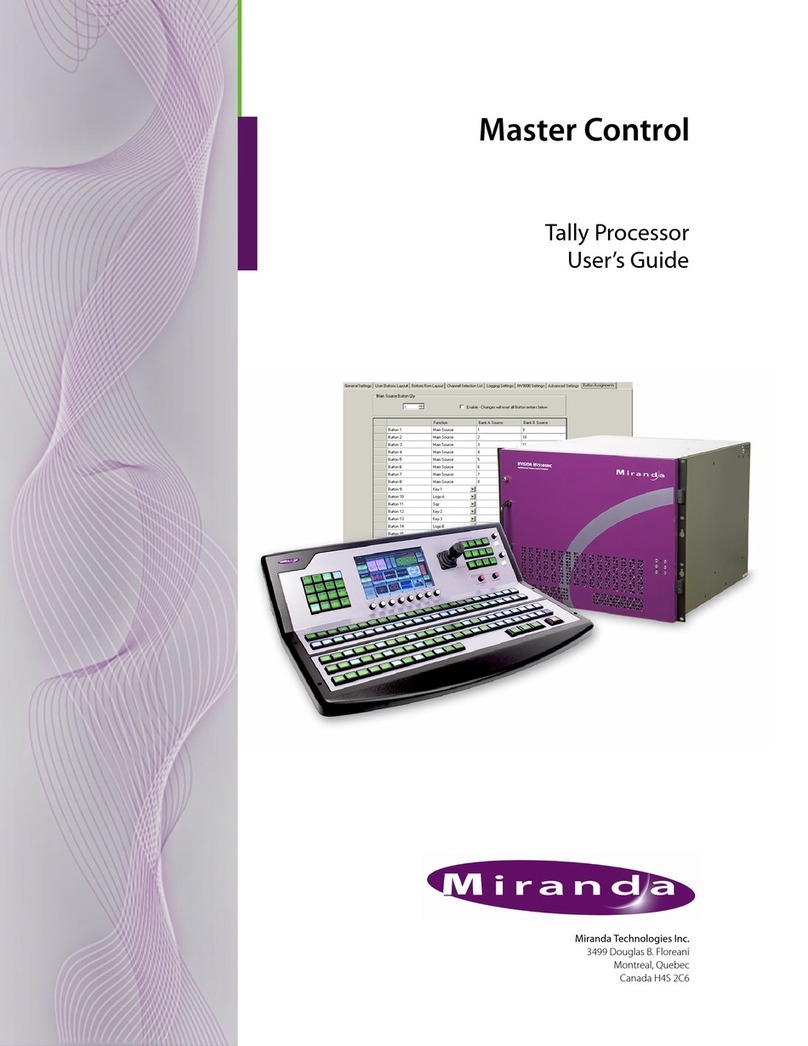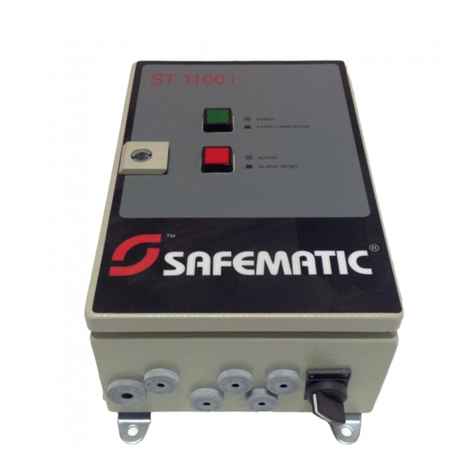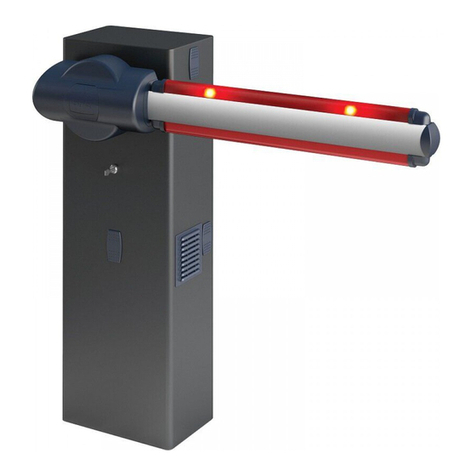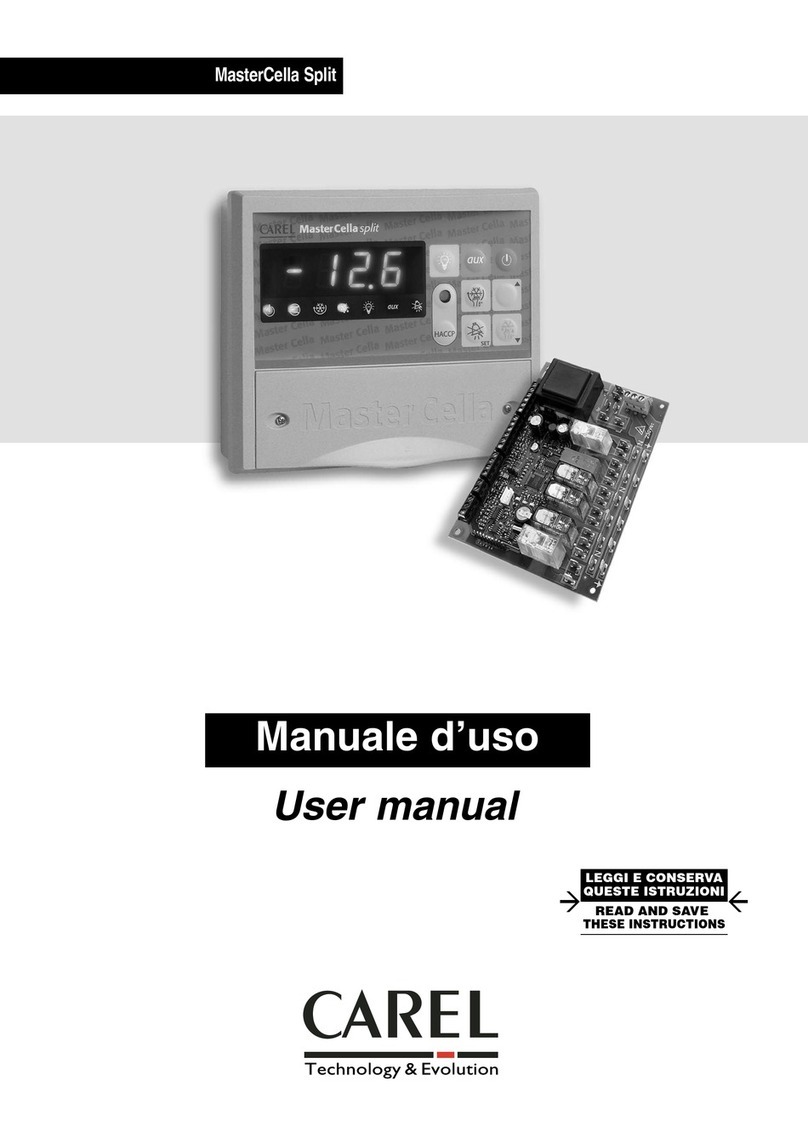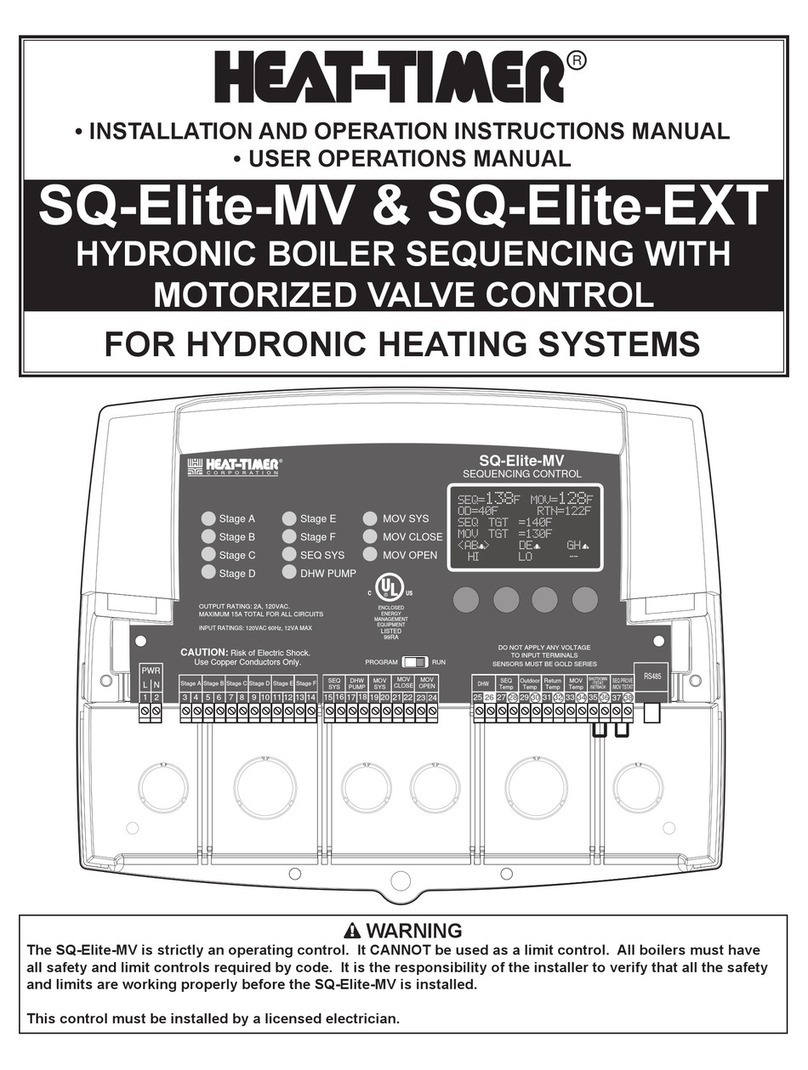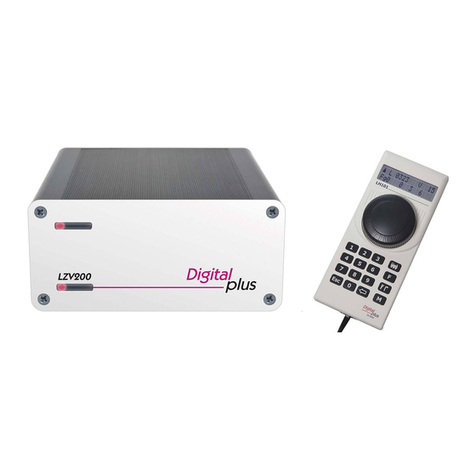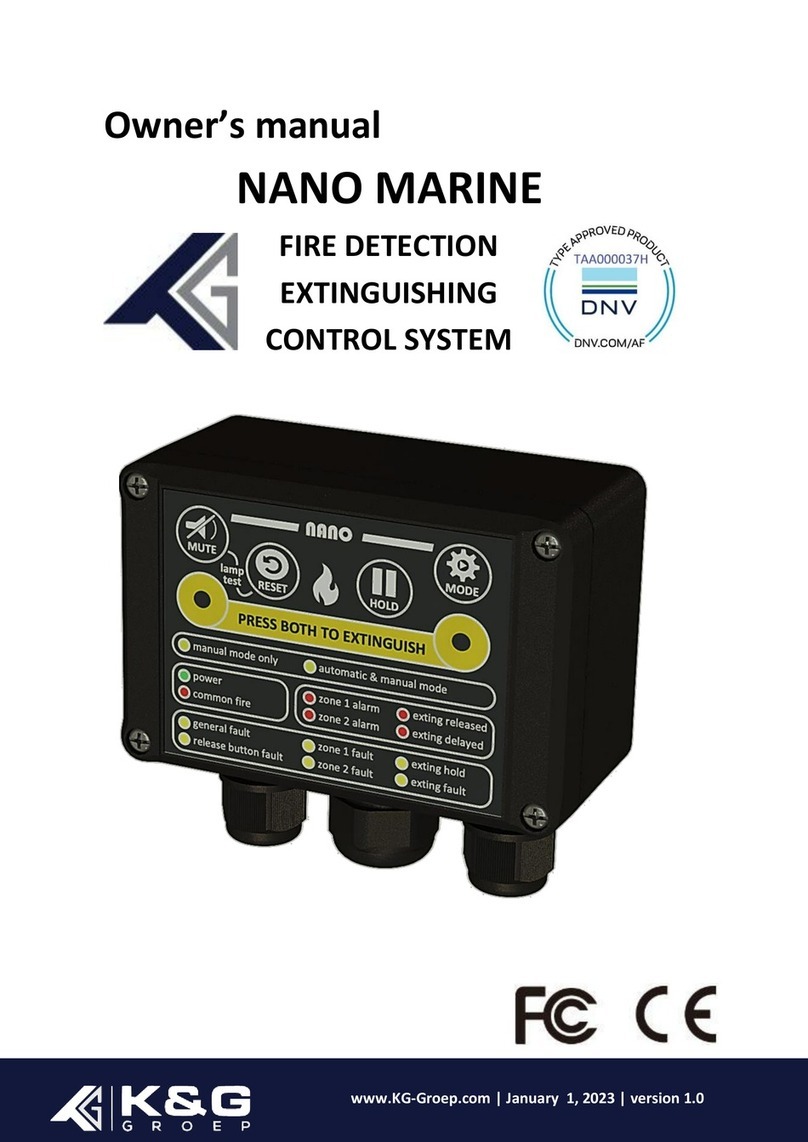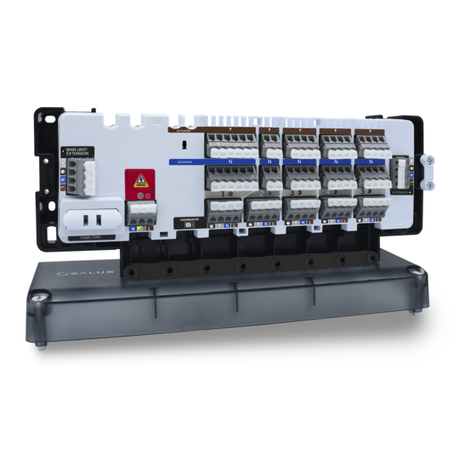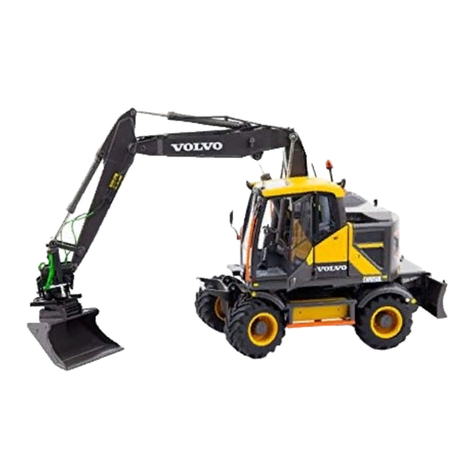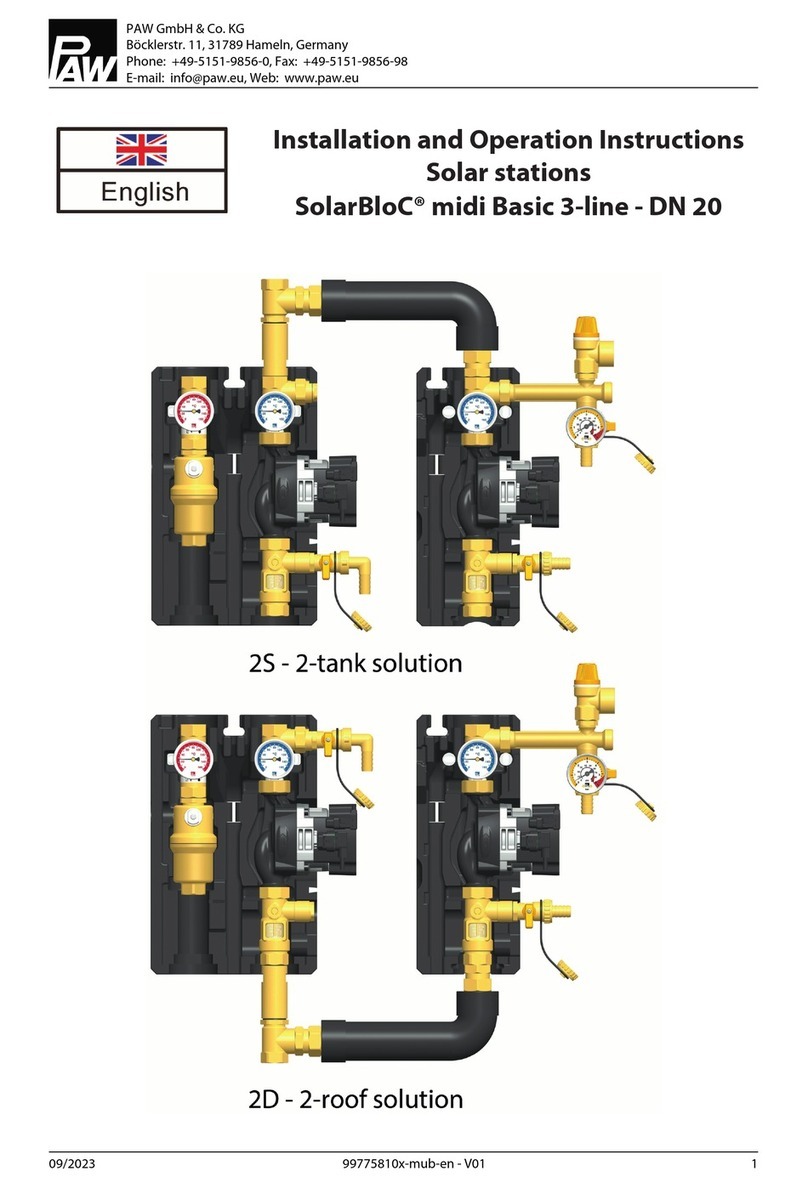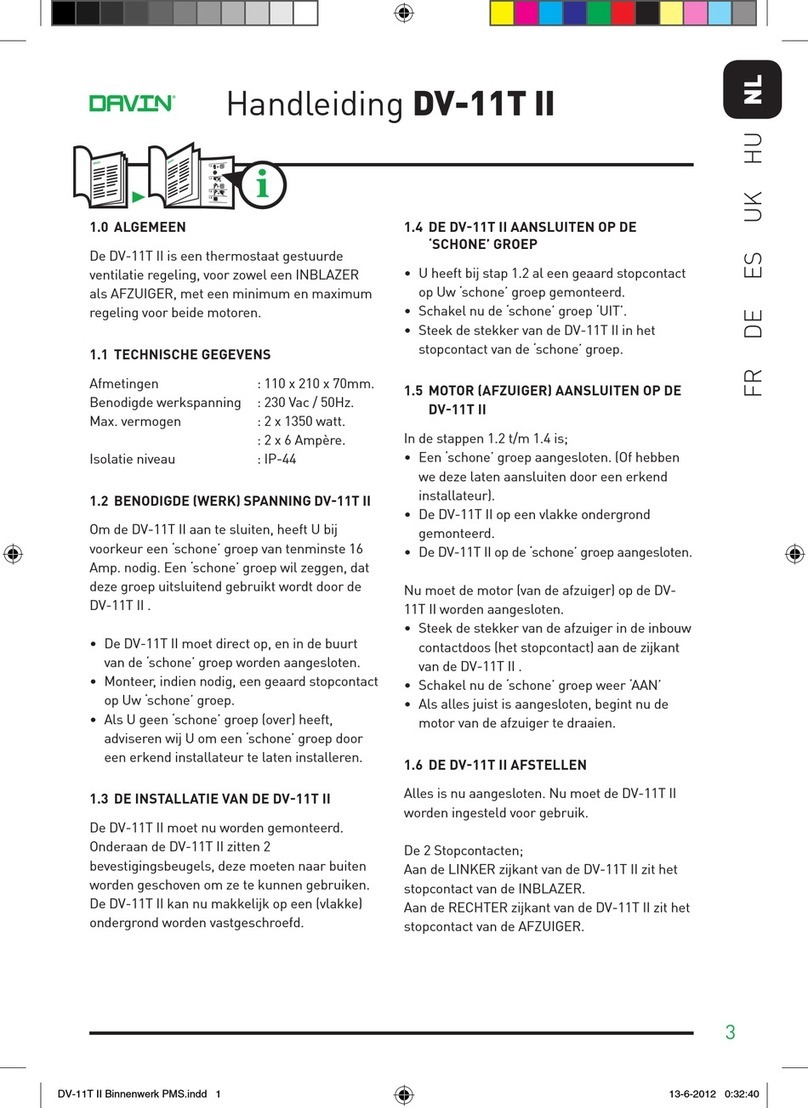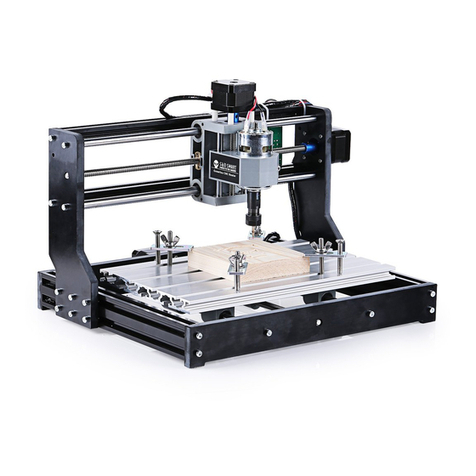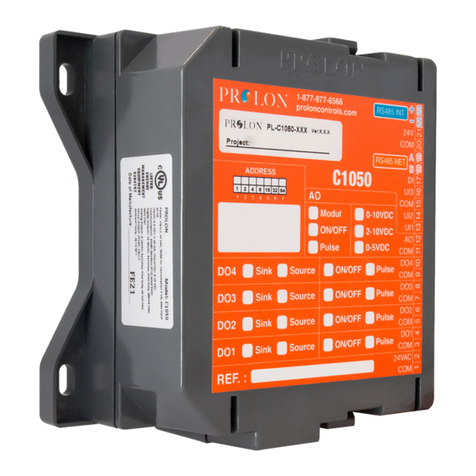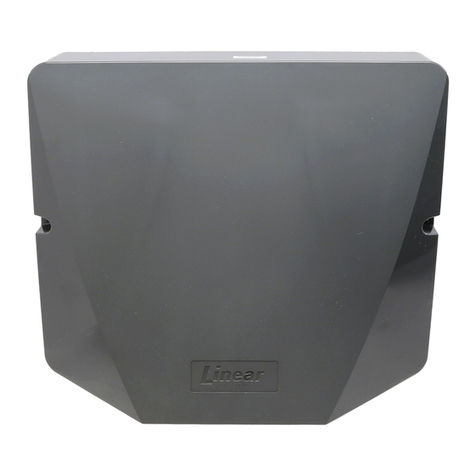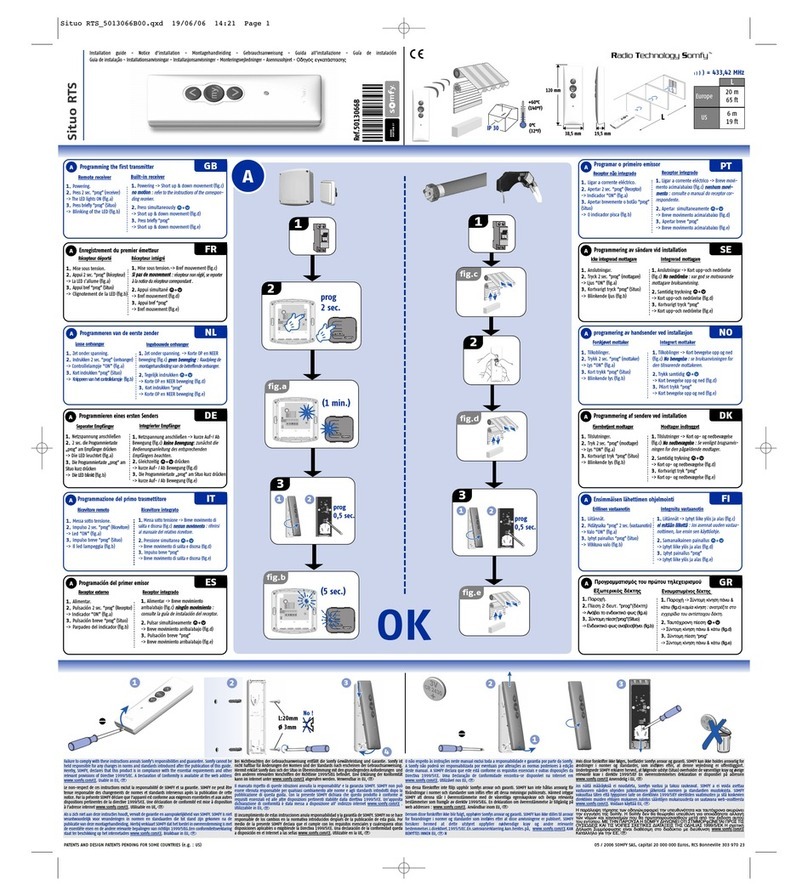Miranda NV8256-Plus User manual

NV8256-Plus
Digital Video Router
User’s Guide
Miranda Technologies Inc.
3499 Douglas B. Floreani
Montreal, Quebec
Canada H4S 2C6

ii Rev 1.3 • 31 Mar 09
NV8256-Plus Digital Video Router—User’s Guide
•Revision: 1.3
•Software Version: -none-
•Part Number: UG0017-03
• Copyright: © 2009 Miranda Technologies, Inc. All rights reserved.
• No part of this manual may be reproduced in any form by photocopy, microfilm, xerography or
any other means, or incorporated into any information retrieval system, electronic or mechani-
cal, without the written permission of Miranda Technologies, Inc.
• The information contained in this manual is subject to change without notice or obligation.
• All title and copyrights as well as trade secret, patent and other proprietary rights in and to the
Software Product (including but not limited to any images, photographs, animations, video,
audio, music, test, and “applets” incorporated into the Software Product), the accompanying
printed materials, and any copies of the Software Product, are owned by Miranda Technologies,
Inc. The Software Product is protected by copyright laws and international treaty provisions.
Customer shall not copy the printed materials accompanying the software product.
Notice
The software contains proprietary information of Miranda Technologies, Inc. It is provided under a
license agreement containing restrictions on use and disclosure and is also protected by copyright
law. Reverse engineering of the software is prohibited.
Due to continued product development, the accuracy of the information in this document may
change without notice. The information and intellectual property contained herein is confidential
between Miranda and the client and remains the exclusive property of Miranda. If you find any
problems in the documentation, please report them to us in writing. Miranda does not warrant that
this document is error-free.
FCC Statement
This equipment has been tested and found to comply with the limits for a Class A digital device,
pursuant to part 15 of the FCC Rules. These limits are designed to provide reasonable protection
against harmful interference when the equipment is operated in a commercial environment. This
equipment generates, uses, and can radiate radio frequency energy and, if not installed and used in
accordance with the instruction manual, may cause harmful interference to radio communications.
Operation of this equipment in a residential area is likely to cause harmful interference in which
case the user will be required to correct the interference at his own expense.
Declaration of Conformance (CE)
All of the equipment described in this manual has been designed to conform with the required
safety and emissions standards of the European Community. Products tested and verified to meet
these standards are marked as required by law with the CE mark. (See Symbols and Their Mean-
ings on page v.)

NV8256-Plus Digital Video Router • User’s Guide iii
When shipped into member countries of the European Community, this equipment is accompanied
by authentic copies of original Declarations of Conformance on file in NVISION Broadcast Prod-
ucts offices in Grass Valley, California USA.
Trademarks
Miranda is a registered trademark of Miranda Technologies, Inc.
Brand and product names mentioned in this manual may be trademarks, registered trademarks or
copyrights of their respective holders. All brand and product names mentioned in this manual serve
as comments or examples and are not to be understood as advertising for the products or their man-
ufactures.
Software License Agreement and Warranty Information
Contact Miranda for details on the software license agreement and product warranty.
Technical Support Contact Information
Miranda has made every effort to ensure that the equipment you receive is in perfect working order
and that the equipment fits your needs. In the event that problems arise that you cannot resolve, or
if there are any questions regarding this equipment or information about other products manufac-
tured by Miranda, please contact your local representative or contact Miranda directly through one
of the appropriate means listed here.
• Main telephone: 514-333-1772
Fax: 514-333-9828
In the Americas, call toll-free: +1-800-224-7882 (9 am to 9 pm EST)
In Europe, the Middle East, African or the UK, call +44 (0) 1491 820222 (9 am to 6 pm, GMT)
In France, call +33 1 55 86 87 88 (9 am to 5 pm, GMT + 1)
In Asia, call +852-2539-6987 (9 am to 5 pm, GMT + 8)
In China, call +86-10-5873-1814
•E-Mail:
• Website: http://www.miranda.com
• Mail Shipping
Miranda Technologies, Inc. NVISION, Inc.
3499 Douglas B. Floreani 125 Crown Point Court
Montreal, Quebec Grass Valley, CA 95945, USA
Canada H4S 2C6
Note Return Material Authorization (RMA) required for all returns.

iv Rev 1.3 • 31 Mar 09
Change History
The table below lists the changes to the Digital Video Router User’s Guide.
• User’s Guide Part # UG0017-03
• Software version: -none-
Restriction on Hazardous Substances (RoHS)
Miranda is in compliance with EU Directive RoHS 2002/95/EC governing the restricted use of cer-
tain hazardous substances and materials in products and in our manufacturing processes.
Miranda has a substantial program in place for RoHS compliance that includes significant invest-
ment in our manufacturing process, and a migration of Miranda product electronic components and
structural materials to RoHS compliance.
It is our objective at NV to maintain compliance with all relevant environmental and product regu-
latory requirements. Detailed information on specific products or on the RoHS program at Miranda
is available from Miranda Customer Support at
1-800-719-1900 (toll-free) or
1-530-265-1000 (outside the U.S.).
Rev Date ECO Description Approved By
1.0 09 Apr 07 12960 New document. DEM/Eng
1.1 07 Aug 08 13430 Updated Configuration chapter to reference the
UniConfig User's Guide.
Updated specifications.
DEM/Eng
1.2 20 Oct 08 14426 Removed UniConfig material. Updated formatting.
Minor corrections.
DEM
1.3 23 Mar 09 15703 Corrections. Format change. DEM/D.Cox

NV8256-Plus Digital Video Router • User’s Guide v
Important Safeguards and Notices
This section provides important safety guidelines for operators and service personnel. Specific
warnings and cautions appear throughout the manual where they apply. Please read and follow this
important information, especially those instructions related to the risk of electric shock or injury to
persons.
Symbols and Their Meanings
The lightning flash with arrowhead symbol within an equilateral triangle alerts the user to the pres-
ence of dangerous voltages within the product’s enclosure that may be of sufficient magnitude to
constitute a risk of electric shock to persons.
The exclamation point within an equilateral triangle alerts the user to the presence of important
operating and maintenance/service instructions.
The Ground symbol represents a protective grounding terminal. Such a terminal must be connected
to earth ground prior to making any other connections to the equipment.
The fuse symbol indicates that the fuse referenced in the text must be replaced with one having the
ratings indicated.
The presence of this symbol in or on Miranda equipment means that it has been designed, tested
and certified as complying with applicable Underwriter’s Laboratory (USA) regulations and rec-
ommendations.
The presence of this symbol in or on Miranda equipment means that it has been designed, tested
and certified as essentially complying with all applicable European Union (CE) regulations and
recommendations.
Warning Any instructions in this manual that require opening the equipment cover or
enclosure are for use by qualified service personnel only. To reduce the risk of
electric shock, do not perform any service other than that contained in the operat-
ing instructions unless you are qualified to do so.

vi Rev 1.3 • 31 Mar 09
General Warnings
A warning indicates a possible hazard to personnel which may cause injury or death. Observe the
following general warnings when using or working on this equipment:
• Heed all warnings on the unit and in the operating instructions.
• Do not use this equipment in or near water.
• This equipment is grounded through the grounding conductor of the power cord. To avoid elec-
trical shock, plug the power cord into a properly wired receptacle before connecting the equip-
ment inputs or outputs.
• Route power cords and other cables so they are not likely to be damaged.
• Disconnect power before cleaning the equipment. Do not use liquid or aerosol cleaners; use
only a damp cloth.
• Dangerous voltages may exist at several points in this equipment. To avoid injury, do not touch
exposed connections and components while power is on.
• Do not wear rings or wristwatches when troubleshooting high current circuits such as the power
supplies.
• To avoid fire hazard, use only the specified fuse(s) with the correct type number, voltage and
current ratings as referenced in the appropriate locations in the service instructions or on the
equipment. Always refer fuse replacements to qualified service personnel.
• To avoid explosion, do not operate this equipment in an explosive atmosphere.
• Have qualified service personnel perform safety checks after any service.
General Cautions
A caution indicates a possible hazard to equipment that could result in equipment damage. Observe
the following cautions when operating or working on this equipment:
• When installing this equipment, do not attach the power cord to building surfaces.
• To prevent damage to equipment when replacing fuses, locate and correct the problem that
caused the fuse to blow before re-applying power.
• Use only the specified replacement parts.
• Follow static precautions at all times when handling this equipment.
• This product should only be powered as described in the manual. To prevent equipment dam-
age, select the proper line voltage on the power supply(ies) as described in the installation doc-
umentation.
• To prevent damage to the equipment, read the instructions in the equipment manual for proper
input voltage range selection.
• Some products include a backup battery. There is a risk of explosion if the battery is replaced by
a battery of an incorrect type. Dispose of batteries according to instructions.
• Products that have (1) no on/off switch and (2) use an external power supply must be installed
in proximity to a main power output that is easily accessible.

NV8256-Plus Digital Video Router • User’s Guide vii
Table of Contents
Chapter 1 Preface. . . . . . . . . . . . . . . . . . . . . . . . . . . . . . . . . . . . . . . . . . . . . . . . . . . . . . . . . . . . . . . . . . . . 1
Chapter Structure . . . . . . . . . . . . . . . . . . . . . . . . . . . . . . . . . . . . . . . . . . . . . . . . . . . . . . . . . . . . . . 1
The PDF Document . . . . . . . . . . . . . . . . . . . . . . . . . . . . . . . . . . . . . . . . . . . . . . . . . . . . . . . . . . . . 1
Terms, Conventions and Abbreviations . . . . . . . . . . . . . . . . . . . . . . . . . . . . . . . . . . . . . . . . . . . . . 2
Chapter 2 Introduction. . . . . . . . . . . . . . . . . . . . . . . . . . . . . . . . . . . . . . . . . . . . . . . . . . . . . . . . . . . . . . . 3
Product Summary. . . . . . . . . . . . . . . . . . . . . . . . . . . . . . . . . . . . . . . . . . . . . . . . . . . . . . . . . . . . . . . 3
Frame Rack . . . . . . . . . . . . . . . . . . . . . . . . . . . . . . . . . . . . . . . . . . . . . . . . . . . . . . . . . . . . . . . 3
Cooling. . . . . . . . . . . . . . . . . . . . . . . . . . . . . . . . . . . . . . . . . . . . . . . . . . . . . . . . . . . . . . . . . . . 4
Signal Rates Supported . . . . . . . . . . . . . . . . . . . . . . . . . . . . . . . . . . . . . . . . . . . . . . . . . . . . . . . . . . 4
Switching Configurations . . . . . . . . . . . . . . . . . . . . . . . . . . . . . . . . . . . . . . . . . . . . . . . . . . . . . . . . 4
Crosspoint Card Slots and Managed Signals . . . . . . . . . . . . . . . . . . . . . . . . . . . . . . . . . . . . . . 5
Combining Input Cards and Output Cards. . . . . . . . . . . . . . . . . . . . . . . . . . . . . . . . . . . . . . . . 5
Examples of Switching Configurations . . . . . . . . . . . . . . . . . . . . . . . . . . . . . . . . . . . . . . . . . . 5
Power Supply . . . . . . . . . . . . . . . . . . . . . . . . . . . . . . . . . . . . . . . . . . . . . . . . . . . . . . . . . . . . . . . . . . 6
Fuses. . . . . . . . . . . . . . . . . . . . . . . . . . . . . . . . . . . . . . . . . . . . . . . . . . . . . . . . . . . . . . . . . . . . . 7
Cooling. . . . . . . . . . . . . . . . . . . . . . . . . . . . . . . . . . . . . . . . . . . . . . . . . . . . . . . . . . . . . . . . . . . 7
Module Slots and Rear Connections . . . . . . . . . . . . . . . . . . . . . . . . . . . . . . . . . . . . . . . . . . . . . . . . 7
Front Slots . . . . . . . . . . . . . . . . . . . . . . . . . . . . . . . . . . . . . . . . . . . . . . . . . . . . . . . . . . . . . . . . 7
Slots and Corresponding Signal Numbers . . . . . . . . . . . . . . . . . . . . . . . . . . . . . . . . . . . . 9
Rear Connections . . . . . . . . . . . . . . . . . . . . . . . . . . . . . . . . . . . . . . . . . . . . . . . . . . . . . . . . . . 10
System Connections. . . . . . . . . . . . . . . . . . . . . . . . . . . . . . . . . . . . . . . . . . . . . . . . . . . . . . . . 10
Router Control System Connections . . . . . . . . . . . . . . . . . . . . . . . . . . . . . . . . . . . . . . . 11
Diagnostic . . . . . . . . . . . . . . . . . . . . . . . . . . . . . . . . . . . . . . . . . . . . . . . . . . . . . . . . . . . 12
Router Control System Expansion Connections . . . . . . . . . . . . . . . . . . . . . . . . . . . . . . 13
Video Reference. . . . . . . . . . . . . . . . . . . . . . . . . . . . . . . . . . . . . . . . . . . . . . . . . . . . . . . 13
Alarm . . . . . . . . . . . . . . . . . . . . . . . . . . . . . . . . . . . . . . . . . . . . . . . . . . . . . . . . . . . . . . . 14
Active Cards. . . . . . . . . . . . . . . . . . . . . . . . . . . . . . . . . . . . . . . . . . . . . . . . . . . . . . . . . . . . . . . . . . 15
Control Cards . . . . . . . . . . . . . . . . . . . . . . . . . . . . . . . . . . . . . . . . . . . . . . . . . . . . . . . . . . . . . 15
Input Cards . . . . . . . . . . . . . . . . . . . . . . . . . . . . . . . . . . . . . . . . . . . . . . . . . . . . . . . . . . . . . . . 15
Standard Input Cards . . . . . . . . . . . . . . . . . . . . . . . . . . . . . . . . . . . . . . . . . . . . . . . . . . . 16
Filler Input Cards . . . . . . . . . . . . . . . . . . . . . . . . . . . . . . . . . . . . . . . . . . . . . . . . . . . . . . 17
Analog-to-SD Input Cards . . . . . . . . . . . . . . . . . . . . . . . . . . . . . . . . . . . . . . . . . . . . . . . 17
Crosspoint Cards . . . . . . . . . . . . . . . . . . . . . . . . . . . . . . . . . . . . . . . . . . . . . . . . . . . . . . . . . . 18
Left and Right Slot Functions . . . . . . . . . . . . . . . . . . . . . . . . . . . . . . . . . . . . . . . . . . . . 18
Middle Slot Functions . . . . . . . . . . . . . . . . . . . . . . . . . . . . . . . . . . . . . . . . . . . . . . . . . . 19
Minimum Crosspoint Cards Required . . . . . . . . . . . . . . . . . . . . . . . . . . . . . . . . . . . . . . 19
Status Reporting . . . . . . . . . . . . . . . . . . . . . . . . . . . . . . . . . . . . . . . . . . . . . . . . . . . . . . . 19
Output Cards . . . . . . . . . . . . . . . . . . . . . . . . . . . . . . . . . . . . . . . . . . . . . . . . . . . . . . . . . . . . . 19
Standard Output Cards . . . . . . . . . . . . . . . . . . . . . . . . . . . . . . . . . . . . . . . . . . . . . . . . . . 20
Monitor Card . . . . . . . . . . . . . . . . . . . . . . . . . . . . . . . . . . . . . . . . . . . . . . . . . . . . . . . . . . . . . 21
Frame Expansion . . . . . . . . . . . . . . . . . . . . . . . . . . . . . . . . . . . . . . . . . . . . . . . . . . . . . . . . . . . . . . 22

viii Rev 1.3 • 29 Mar 09
Table of Contents
Chapter 3 Installation . . . . . . . . . . . . . . . . . . . . . . . . . . . . . . . . . . . . . . . . . . . . . . . . . . . . . . . . . . . . . . . 23
Summary . . . . . . . . . . . . . . . . . . . . . . . . . . . . . . . . . . . . . . . . . . . . . . . . . . . . . . . . . . . . . . . . . . . . 23
Package Contents . . . . . . . . . . . . . . . . . . . . . . . . . . . . . . . . . . . . . . . . . . . . . . . . . . . . . . . . . . . . . . 24
Preparing for Installation . . . . . . . . . . . . . . . . . . . . . . . . . . . . . . . . . . . . . . . . . . . . . . . . . . . . . . . . 24
Rack Mount . . . . . . . . . . . . . . . . . . . . . . . . . . . . . . . . . . . . . . . . . . . . . . . . . . . . . . . . . . . . . . . . . . 25
Making Power Connections . . . . . . . . . . . . . . . . . . . . . . . . . . . . . . . . . . . . . . . . . . . . . . . . . . . . . . 26
Power Supply Monitor and Alarms Connections . . . . . . . . . . . . . . . . . . . . . . . . . . . . . . . . . 26
Power Cords and Branch Circuits . . . . . . . . . . . . . . . . . . . . . . . . . . . . . . . . . . . . . . . . . . . . . 27
Connecting Power to the NV6257 and the Router. . . . . . . . . . . . . . . . . . . . . . . . . . . . . 27
How to Connect Power: . . . . . . . . . . . . . . . . . . . . . . . . . . . . . . . . . . . . . . . . . . . . . . . . . . . . . 27
Installing Active Cards. . . . . . . . . . . . . . . . . . . . . . . . . . . . . . . . . . . . . . . . . . . . . . . . . . . . . . . . . . 30
Making Signal Connections . . . . . . . . . . . . . . . . . . . . . . . . . . . . . . . . . . . . . . . . . . . . . . . . . . . . . . 33
Local Signal Connections . . . . . . . . . . . . . . . . . . . . . . . . . . . . . . . . . . . . . . . . . . . . . . . . . . . 33
Signal Expansion Connections. . . . . . . . . . . . . . . . . . . . . . . . . . . . . . . . . . . . . . . . . . . . . . . . 34
Making Router Control System Connections . . . . . . . . . . . . . . . . . . . . . . . . . . . . . . . . . . . . . . . . 35
Serial Control Connections . . . . . . . . . . . . . . . . . . . . . . . . . . . . . . . . . . . . . . . . . . . . . . . . . . 36
Ethernet Control Connections . . . . . . . . . . . . . . . . . . . . . . . . . . . . . . . . . . . . . . . . . . . . . . . . 37
GSC Node Bus Control Connections. . . . . . . . . . . . . . . . . . . . . . . . . . . . . . . . . . . . . . . . . . . 38
Control System Expansion Connections . . . . . . . . . . . . . . . . . . . . . . . . . . . . . . . . . . . . . . . . 39
Terminating Unused Control System Expansion Connections . . . . . . . . . . . . . . . . . . . . . . . 40
Making Diagnostic Connections . . . . . . . . . . . . . . . . . . . . . . . . . . . . . . . . . . . . . . . . . . . . . . . . . . 40
Router IP Address . . . . . . . . . . . . . . . . . . . . . . . . . . . . . . . . . . . . . . . . . . . . . . . . . . . . . . . . . 41
Temporarily Connecting to UniConfig . . . . . . . . . . . . . . . . . . . . . . . . . . . . . . . . . . . . . . . . . 41
How to Make Temporary Diagnostic Connections . . . . . . . . . . . . . . . . . . . . . . . . . . . . . . . . 41
Permanently Connecting to UniConfig . . . . . . . . . . . . . . . . . . . . . . . . . . . . . . . . . . . . . . . . . 41
How to Make Permanent Diagnostic Connections: . . . . . . . . . . . . . . . . . . . . . . . . . . . . . . . . 42
Making Video Reference Connections . . . . . . . . . . . . . . . . . . . . . . . . . . . . . . . . . . . . . . . . . . . . . 43
Making Monitor Connections . . . . . . . . . . . . . . . . . . . . . . . . . . . . . . . . . . . . . . . . . . . . . . . . . . . . 43
Local Monitor Connections . . . . . . . . . . . . . . . . . . . . . . . . . . . . . . . . . . . . . . . . . . . . . . . . . . 44
Monitor Expansion Connections . . . . . . . . . . . . . . . . . . . . . . . . . . . . . . . . . . . . . . . . . . . . . . 44
Making Alarm Connections . . . . . . . . . . . . . . . . . . . . . . . . . . . . . . . . . . . . . . . . . . . . . . . . . . . . . . 46
Alarm Indicator Equipment . . . . . . . . . . . . . . . . . . . . . . . . . . . . . . . . . . . . . . . . . . . . . . . . . . 46
NV6257 Alarms . . . . . . . . . . . . . . . . . . . . . . . . . . . . . . . . . . . . . . . . . . . . . . . . . . . . . . . 47
Router Alarms . . . . . . . . . . . . . . . . . . . . . . . . . . . . . . . . . . . . . . . . . . . . . . . . . . . . . . . . 47
Verification . . . . . . . . . . . . . . . . . . . . . . . . . . . . . . . . . . . . . . . . . . . . . . . . . . . . . . . . . . . . . . . . . . 49
Chapter 4 Operation . . . . . . . . . . . . . . . . . . . . . . . . . . . . . . . . . . . . . . . . . . . . . . . . . . . . . . . . . . . . . . . . 51
Overview . . . . . . . . . . . . . . . . . . . . . . . . . . . . . . . . . . . . . . . . . . . . . . . . . . . . . . . . . . . . . . . . . . . . 51
NV9000 Control Systems . . . . . . . . . . . . . . . . . . . . . . . . . . . . . . . . . . . . . . . . . . . . . . . . . . . . . . . 51
Third-Party Control Systems . . . . . . . . . . . . . . . . . . . . . . . . . . . . . . . . . . . . . . . . . . . . . . . . . . . . . 52
Setting Redundant Crosspoint Card Switching . . . . . . . . . . . . . . . . . . . . . . . . . . . . . . . . . . . . . . . 52
Using Remote Control . . . . . . . . . . . . . . . . . . . . . . . . . . . . . . . . . . . . . . . . . . . . . . . . . . . . . . 54
Chapter 5 Configuration . . . . . . . . . . . . . . . . . . . . . . . . . . . . . . . . . . . . . . . . . . . . . . . . . . . . . . . . . . . . 55
UniConfig . . . . . . . . . . . . . . . . . . . . . . . . . . . . . . . . . . . . . . . . . . . . . . . . . . . . . . . . . . . . . . . . . . . 55

NV8256-Plus Digital Video Router • User’s Guide ix
Table of Contents
Chapter 6 Maintenance . . . . . . . . . . . . . . . . . . . . . . . . . . . . . . . . . . . . . . . . . . . . . . . . . . . . . . . . . . . . . 57
General Maintenance . . . . . . . . . . . . . . . . . . . . . . . . . . . . . . . . . . . . . . . . . . . . . . . . . . . . . . . . . . . 57
Fuse Replacement . . . . . . . . . . . . . . . . . . . . . . . . . . . . . . . . . . . . . . . . . . . . . . . . . . . . . . . . . . . . . 57
Indicator LEDs . . . . . . . . . . . . . . . . . . . . . . . . . . . . . . . . . . . . . . . . . . . . . . . . . . . . . . . . . . . . . . . . 58
Power Supplies. . . . . . . . . . . . . . . . . . . . . . . . . . . . . . . . . . . . . . . . . . . . . . . . . . . . . . . . . . . . 58
Control Cards . . . . . . . . . . . . . . . . . . . . . . . . . . . . . . . . . . . . . . . . . . . . . . . . . . . . . . . . . . . . . 58
Input, Crosspoint, and Output Cards . . . . . . . . . . . . . . . . . . . . . . . . . . . . . . . . . . . . . . . . . . . 58
Air Flow . . . . . . . . . . . . . . . . . . . . . . . . . . . . . . . . . . . . . . . . . . . . . . . . . . . . . . . . . . . . . . . . . . . . . 59
Fan Cleaning and Replacement . . . . . . . . . . . . . . . . . . . . . . . . . . . . . . . . . . . . . . . . . . . . . . . 59
Intake Filter Screen Cleaning. . . . . . . . . . . . . . . . . . . . . . . . . . . . . . . . . . . . . . . . . . . . . . . . . 59
Battery Replacement . . . . . . . . . . . . . . . . . . . . . . . . . . . . . . . . . . . . . . . . . . . . . . . . . . . . . . . . . . . 59
Troubleshooting . . . . . . . . . . . . . . . . . . . . . . . . . . . . . . . . . . . . . . . . . . . . . . . . . . . . . . . . . . . . . . . 60
Obtaining Service. . . . . . . . . . . . . . . . . . . . . . . . . . . . . . . . . . . . . . . . . . . . . . . . . . . . . . . . . . . . . . 61
Chapter 7 Glossary. . . . . . . . . . . . . . . . . . . . . . . . . . . . . . . . . . . . . . . . . . . . . . . . . . . . . . . . . . . . . . . . . . 63
Glossary . . . . . . . . . . . . . . . . . . . . . . . . . . . . . . . . . . . . . . . . . . . . . . . . . . . . . . . . . . . . . . . . . . . . . 63
Chapter 8 Technical Details . . . . . . . . . . . . . . . . . . . . . . . . . . . . . . . . . . . . . . . . . . . . . . . . . . . . . . . . . 65
Power Specifications (NV6257 PS6000). . . . . . . . . . . . . . . . . . . . . . . . . . . . . . . . . . . . . . . . . . . . 65
Physical Specifications . . . . . . . . . . . . . . . . . . . . . . . . . . . . . . . . . . . . . . . . . . . . . . . . . . . . . . . . . 66
Environmental Specifications . . . . . . . . . . . . . . . . . . . . . . . . . . . . . . . . . . . . . . . . . . . . . . . . . . . . 67
Audio Specifications . . . . . . . . . . . . . . . . . . . . . . . . . . . . . . . . . . . . . . . . . . . . . . . . . . . . . . . . . . . 67
Video Specifications . . . . . . . . . . . . . . . . . . . . . . . . . . . . . . . . . . . . . . . . . . . . . . . . . . . . . . . . . . . 68
Time Code Specifications . . . . . . . . . . . . . . . . . . . . . . . . . . . . . . . . . . . . . . . . . . . . . . . . . . . . . . . 70
Chapter 9 Part Numbers . . . . . . . . . . . . . . . . . . . . . . . . . . . . . . . . . . . . . . . . . . . . . . . . . . . . . . . . . . . . 71
Cards . . . . . . . . . . . . . . . . . . . . . . . . . . . . . . . . . . . . . . . . . . . . . . . . . . . . . . . . . . . . . . . . . . . . . . . 71
Power Supply . . . . . . . . . . . . . . . . . . . . . . . . . . . . . . . . . . . . . . . . . . . . . . . . . . . . . . . . . . . . . . . . . 71
Frame Expansion . . . . . . . . . . . . . . . . . . . . . . . . . . . . . . . . . . . . . . . . . . . . . . . . . . . . . . . . . . . . . . 71
Index . . . . . . . . . . . . . . . . . . . . . . . . . . . . . . . . . . . . . . . . . . . . . . . . . . . . . . . . . . . . . . . . . . . . . . . . . . 73

xRev 1.3 • 29 Mar 09
Table of Contents

NV8256-Plus Digital Video Router • User’s Guide 1
1. Preface
Chapter 1 provides an overview of the NV8256-Plus User’s Guide. The following topics are dis-
cussed:
•Chapter Structure
•The PDF Document
•Terms, Conventions and Abbreviations
Chapter Structure
The following chapters provide detailed instructions for all aspects of NV8256-Plus operation:
• Chapter 1, Preface, (this chapter) outlines easy ways to use this guide; provides a list of terms
and conventions.
• Chapter 2, Introduction, provides an introduction and general description of the router.
• Chapter 3, Installation, provides installation and connection instructions.
• Chapter 5, Configuration, points to UniConfig.
• Chapter 4, Operation, provides general operation information.
• Chapter 6, Maintenance, provides maintenance information.
• Chapter 8, Technical Details, provides electrical, video, audio, mechanical, and environmental
specifications, product drawings, and default settings.
• Chapter 7, Glossary, is a glossary.
• Appendix 9, Part Numbers, presents a list of part numbers for Miranda cables, connectors and
cards for the NV8256-Plus.
•AnIndex is also provided for your reference.
The PDF Document
This guide is provided in PDF format, allowing you to use Acrobat’s “bookmarks” to navigate to
any desired location. You can also print a hardcopy. Please note:
• Use the Table of Contents or the bookmarks page to jump to any desired section.
• Many hyperlinks are provided within the chapters.
• Use the Index to jump to specific topics within a chapter. Each page number in the index is a
hyperlink.

2Rev 1.3 • 29 Mar 09
1. Preface
Terms, Conventions and Abbreviations
• Use Acrobat’s ‘Go to Previous View’ and ‘Go to Next View’ buttons to retrace your complete
navigational path.
• Use the ‘First Page’, ‘Previous Page’, and ‘Next Page’, and ‘Last Page’ buttons to go to the
first, previous, next, or last page within a PDF file.
• Use Acrobat’s extensive search capabilities, such as the ‘Find’ tool and ‘Search’ tool to perform
comprehensive searches as required.
Terms, Conventions and Abbreviations
The following conventions are used throughout this guide:
• The symbol Sdenotes either an example or a special message.
• Notes, Cautions and Important messages are presented in note boxes.
• Entries written in bold-face or capital letters denote physical control panel buttons or GUI but-
tons.
•Click
Apply to ...
• Press the SRC 12 button.
• Entries in single quotes denote a field name, tab name or label.
• The AES reference connection is labeled ‘AES REF 1’.
Note To display the navigation buttons, right-click the Tool Bar area, and check ‘Naviga-
tion’.

NV8256-Plus Digital Video Router • User’s Guide 3
2. Introduction
Chapter 2 provides an introduction to the NV8256-Plus Digital Video Router. It presents the fol-
lowing topics:
•Product Summary
•Signal Rates Supported
•Switching Configurations
•Power Supply
•Module Slots and Rear Connections
•Active Cards
•Frame Expansion
Product Summary
The NV8256-Plus manages standard-definition (SD), high-definition (HD) and 3.0 Gb/s (“3Gig”)
signal routing. See Signal Rates Supported on page 4. The routers can manage SD separately, or
SD, HD and 3.0 Gb/s signals combined. Support for SD and HD is called Super Wide Band (SWB).
Support for SD, HD, and 3.0 Gb/s is called “3Gig.”
The NV8256-Plus is a robust system capable of supporting signal rate of 10Mb/s up to 3.0 Gb/s.
This enables you to invest in a single router to meet current routing needs and potential future
growth as industry standards evolve.
The router features a flexible I/O design enabling the implementation of a wide range of configura-
tions. A single NV8256-Plus can manage up to 256 inputs and 256 outputs. Using expansion ports,
two routers can be connected together to manage up to 512 inputs and 512 outputs. Within one
router, or between two connected routers, configurations can start at 16 inputs and 16 outputs,
increasing in increments of 16, up to 256 per router. Because inputs and outputs are independent,
configurations are based on 16, but do not have to be squared (i.e., 256×256, 512×512). For exam-
ple, if using the NV8256-Plus as a standalone router, switching configurations of 16 inputs and 256
outputs, 32 inputs and 256 outputs, 256 inputs and 48 outputs, and so on are valid. Similarly, if two
routers are connected together, non-square configurations of inputs and outputs can be created,
increasing in increments of 16 up to a maximum of 512 inputs and 512 outputs.
In addition, the NV8256-Plus features conversion of video signals from analog composite to SD
and SD to analog composite.
Frame Rack
The NV8256-Plus mounts in a rack with minimum dimensions of 22RU high by 19″wide by 18″
deep. When placing the rack in your facility, be sure to leave enough space for air flow through the

4Rev 1.3 • 29 Mar 09
2. Introduction
Signal Rates Supported
front of the router and within easy access of an AC power source. For installation instructions, see
Rack Mount on page 25.
Cooling
The router has a fan tray housing three fans. The fan tray is located at the top of the chassis and
accessed from the front of the frame. The fans draw cooling air from the front of the router, through
the door, and exhaust it through the rear of the frame. The router must have the door correctly
installed and closed for proper airflow through the chassis.
There are three removable air filters: two are located on the inside of the door assembly and one
inside the router. It is recommended that you perform regular maintenance on the fan tray and fil-
ters. For more information, see Maintenance on page 57.
Signal Rates Supported
The NV8256-Plus supports SD, HD, 3Gig and analog composite video signals. Incoming analog
signals are converted to digital format for internal routing. Outgoing SD signals can be converted to
analog composite for distribution.
The following table lists the SMPTE standard and rates for SD, HD and 3Gig signals, and for ana-
log-to-digital and digital-to-analog conversion. Each signal type is managed by a specific input or
output card (circuit board). For a description of each card and corresponding card part number, see
Input Cards (page 15) and Output Cards (page 15).
Switching Configurations
The NV8256-Plus is designed to be highly flexible, enabling the creation of a variety of configura-
tions for managing incoming and outgoing signals. A single router can manage a maximum of
256 inputs and 256 outputs. By connecting two routers together, the number of signals managed
Caution If airflow is impeded, overheating may occur.
Type SMPTE Re-clock At Pass Through
Standard Definition
(SD)
259M
344M
143, 177, 270, 360 and 540Mb/s 10 Mb/s to 540 Mb/s
Super Wide Band
(SD and HD combined)
259M
344M
292M
143, 177, 270, 360 and
540 Mb/s; 1.483 and 1.485 Gb/s
10 Mb/s to 1.5 Gb/s
3Gig (SD, HD and
3.0 Gb/s combined)
259M
292M
424M
270, 1.483, 1.485, 2.966 and
2.970 Gb/s
10 Mb/s to 3.0 Gb/s
Analog-to-SD
(analog to SD-SDI)
Input: PAL or NTSC analog composite video
Converted to: SMPTE 259M-C, (4:2:2), 270 Mb/s
SD-to-Analog
(SD-SDI to analog)
Input: SMPTE 259M-C, (4:2:2), 270 Mb/s
Converted to: PAL or NTSC analog composite video

NV8256-Plus Digital Video Router • User’s Guide 5
2. Introduction
Switching Configurations
can be doubled to a maximum of 512 inputs and 512 outputs. Each input card and output card man-
age 16 signals each. This means that switching configurations can be based on 16, increasing in
increments of 16, up to the maximum number of inputs and outputs allowed. Each switching con-
figuration is created by installing crosspoint cards, input cards, and output cards in specific slots on
each router.
Crosspoint Card Slots and Managed Signals
The crosspoint card manages signal switching with each card managing up to 256 inputs and out-
puts. The router frame has three slots for housing crosspoint cards. (See Figure 2-2 on page 8.)
Depending on the slot in which it is installed, the crosspoint card performs different switching func-
tions. Slots are listed by location when facing the front of the router, as follows:
•LeftSlot
—Manages all inputs and outputs for the local router (inputs 1–256).
•CenterSlot
—An optional crosspoint card can be installed for redundancy as a backup for
another crosspoint card. The crosspoint card can take over active control from the crosspoint
card installed in the left slot or right slot, but not both. For more information, see Setting
Redundant Crosspoint Card Switching on page 52.
• Right Slot —Manages all signals received through the expansion connections. The crosspoint
card receives signals from a second, connected router (inputs 257–512) and sends the signals to
local outputs 1–256.
Because the crosspoint cards installed in a specific slot manage specific outputs, depending on your
configuration, not all crosspoint cards may need to be installed. For example, if only outputs
1–256 have output cards, then a crosspoint card is only required in the left slot. The right slot can
remain empty. The middle slot is optional.
For more information on inputs and outputs and assigned numbers, see Slots and Corresponding
Signal Numbers on page 9.
Combining Input Cards and Output Cards
When connecting two routers together, different combinations of input cards and output cards can
be installed to meet switching configuration needs while minimizing cost. ‘Standard’ input cards
receive signals from the router’s local input connections and from a second, connected router
through expansion cables. ‘Filler’ input cards receive signals only from expansion cables when two
routers are connected together, but not local inputs. Because filler cards perform less signal pro-
cessing, they are less expansive then standard input cards. If a switching configuration requires two
routers, but local inputs to only one of the two routers, filler cards can be used in the router not
receiving local inputs.
Output cards manage outgoing signals. If a router is only used for receiving incoming signals, such
as in a 512 inputs and 256 outputs configuration, output cards are not needed on both routers. Out-
put cards are only required on routers distributing outgoing signals through local coaxial connec-
tors.
Examples of Switching Configurations
The following table lists possible switching configurations when two routers are connected
together. For each configuration, the table lists in which slot crosspoint cards are installed, on

6Rev 1.3 • 29 Mar 09
2. Introduction
Power Supply
which router, what type of input card is used, and if the router requires output cards. For a descrip-
tion of each type of card, see Active Cards on page 15. The two connected routers are listed as
Router 1 and Router 2. Although the examples list a full complement of input cards, the number of
cards installed depends on the number of inputs and outputs being managed by a specific switching
configuration. The optional, redundant crosspoint card (installed in the center crosspoint card slot)
is not included in the following examples. Only required crosspoint cards are listed.
Power Supply
The power supply for the NV8256-Plus is an external, separate frame, the NV6257. The NV6257
uses the PS6000 series power supply module. The NV8256-Plus router requires four PS6000 power
supply modules. For redundancy, an additional four PS6000 modules can be installed. The NV6257
can house a total of four primary and four redundant PS6000 power supply modules. This means
that one NV6257 power supply frame can power one NV8256-Plus router frame.
The PS6000 power supply module accepts a wide range of AC input voltages and produces five
+48 VDC outputs. The power supply automatically senses the AC input voltage (90–130 and 180–
250 VAC) and adjusts to maintain a relatively constant DC output; no voltage selection is required.
The five regulated outputs are directed to modules in the router where on-board regulators produce
the DC voltages required by the local circuits. Each +48VDC output powers one of the five green
LEDs and output test points located on the front of the power supply. Under normal operation, all
five LEDs are lit. For more information, see Indicator LEDs on page 58.
Figure 2-1 shows the power supply architecture.
Figure 2-1. PS6000 Power Supply Module Diagram
For information on making power supply connections, see Making Power Connections on page 26.
Inputs ×
Outputs
Number of
Frames
Number of
Crosspoint
Cards
Crosspoint
Card Slot
Type of
Input Card
Output Cards in
Router
256×256 1 1 Left Standard Router 1
256×512 2 2 Router 1: Left
Router 2: Right
Router 1: Standard
Router 2: Filler
Router 1,
Router 2
512×256 2 2 Router 1: Left, Right
Router 2: None
Router 1: Standard
Router 2: Standard
Only on
Router 1
512×512 2 4 Router 1: Left, Right
Router 2: Left, Right
Router 1: Standard
Router 2: Standard
Router 1,
Router 2
Power Sense
and Limiting
AC Input, Fuse,
Rectifiers, and Filter
Power Factor
Correction
+48 DC
Regulators (×5)
+48 DC
Out (×5)
90130 AC or
180250 AC In

NV8256-Plus Digital Video Router • User’s Guide 7
2. Introduction
Module Slots and Rear Connections
Fuses
Fuses for AC power inputs are located on the PS6000 power supply modules. When an NV6257 is
ordered, fuses appropriate for line voltage in use at the country of destination are installed on the
PS6000 power supply modules. Be sure to check the fuse ratings for compliance with specific
requirements in your area. A 7.5 A fuse is required for 90–130 VAC applications. For 180–250 VAC
operation, a 3.75 A fuse is required. For information on replacing fuses, see Fuse Replacement on
page 57.
Cooling
There are four low-speed fans located along the front edge of each PS6000 power supply module.
Each fan pulls a small quantity of air across the internal heat sinks. An additional fan on the
NV6257 frame also provides cooling and is serviceable.
Module Slots and Rear Connections
The NV8256-Plus has slots for input, output, monitor, control and crosspoint cards. Cards are
installed in slots from the front of the router frame. The rear of the router is a solid backplate con-
taining connections for receiving and distributing signals and connecting to system functions, such
as a control system, alarms or references.
Front Slots
Figure 2-2 on page 8 shows the front of the NV8256-Plus with the door removed. From this view,
in the slots that do not have an active card installed (right-hand side), the backside of the backplate
and the motherboard connections are visible. The router features 16 upper bay slots for output cards
and 16 lower bay slots for input cards. In the center of the router are three vertical slots for cross-
point cards. Above the crosspoint card slots is the monitor card slot. Near the bottom of the router
frame are two horizontal slots for the control cards. For more information on each type of card, see
Active Cards on page 15.
From this view, the fan tray at the very top of the router chassis is also visible. For more informa-
tion on frame cooling, see Cooling on page 4.

8Rev 1.3 • 29 Mar 09
2. Introduction
Module Slots and Rear Connections
Figure 2-2. NV8256-Plus Router with Door Removed (Front View)
1 - 128
Output Card
Slots (8)
Input Card
Slots (8)
Output
Cards (8)
Fan Tray
Monitor
Card Slot (1)
Input
Cards (8)
Router Control Cards (2)
Crosspoint
Cards (3)

NV8256-Plus Digital Video Router • User’s Guide 9
2. Introduction
Module Slots and Rear Connections
Slots and Corresponding Signal Numbers
If the NV8256-Plus router is used as a standalone router, up to 256 incoming signals can be
received and up to 256 outgoing signals distributed. The crosspoint card installed in the left cross-
point card slot manages inputs 1–256. If two NV8256-Plus routers are connected together, signals
coming into one router can be sent to a second, connected router. This can double the number of
signals managed by the two routers to a maximum of 512 inputs and 512 outputs. The crosspoint
card installed in the right crosspoint card slot manages inputs from the second router: 257–512.
A crosspoint card installed in the middle slot acts as a redundant crosspoint card for fail-over. For
more information on crosspoint cards, see Crosspoint Card Slots and Managed Signals on page 5.
For information on installing cards in modules slots, see Installing Active Cards on page 30.
Figure 2-3. Inputs and Outputs, Numbers Assigned (Front View)
Each input card slot and output card
slot, and the card it holds, receives or
distributes signals through 16 BNC
connectors. Each signal is assigned a
number that corresponds to the physi-
cal input or output connection. The
numbers correspond to the slot in
which an input card or output card is
installed. This means that input slot 1
corresponds to inputs 1–16, input slot
2 corresponds to inputs 17–32, and so
on, up to 256, as shown in Figure 2-3.
Output slots are similarly numbered,
such that output slot 1 corresponds to
outputs 1–16, output slot 2 corre-
sponds to outputs 17–32, and so on,
up to 256, as shown in Figure 2-3.
Similarly, the location of an input card
or output card in the router frame
determines the inputs and outputs
managed by that card. For example,
an input card located in slot 1 man-
ages inputs 1–16. An input card
located in input slot 2 manages inputs
17–32, and so on.
Control CardSecondary
OUTPUTS 129-144
OUTPUTS 145-160
OUTPUTS 161-176
OUTPUTS 177-192
OUTPUTS 193-208
OUTPUTS 209-224
OUTPUTS 225-240
OUTPUTS 241-256
INPUTS 129144
INPUTS 145160
INPUTS 161176
INPUTS 177192
INPUTS 193208
INPUTS 209224
INPUTS 225240
INPUTS 241256
OUTPUTS 116
OUTPUTS 1732
OUTPUTS 3348
OUTPUTS 4964
OUTPUTS 6580
OUTPUTS 8196
OUTPUTS 97112
OUTPUTS 113128
INPUTS 116
INPUTS 1732
INPUTS 3348
INPUTS 4964
INPUTS 6580
INPUTS 8196
INPUTS 97112
INPUTS 113128
MONITOR
FAN
CROSSPOINT INPUTS 1-256
CROSSPOINT (REDUNDANT)
CROSSPOINT INPUTS 257-512
Control CardPrimary

10 Rev 1.3 • 29 Mar 09
2. Introduction
Module Slots and Rear Connections
Rear Connections
The rear of the NV8256-Plus (Figure 2-4 on page 10) features a backplate containing BNC connec-
tions: 256 for receiving signals and 256 for distributing signals. These connections are passive and
pass the signals through to active, receiving connections on the input cards and output cards.
An additional set of four BNC connections, located in the upper, center area of the frame, send sig-
nals to the monitor card. In the lower region of the frame are connections for system and power
functions, as shown in Figure 2-5 on page 11. In the center of the frame are connections for expan-
sion cables used to send signals between two connected NV8256-Plus router frames. In Figure 2-4
on page 10, the expansion connections are shown with the cover plates still on.
Figure 2-4. NV8256-Plus Router (Rear View)
System Connections
The NV8256-Plus features connections for managing system functions, located on the rear of the
router. These connections enable you to connect to:
• A router control system using either serial, Ethernet, or GSC Node Bus connectors.
• A stable source of video signal for reference purposes.
Output
Connectors
(128)
Fan Exhaust
Monitor
Connectors
Power Conn. 1
Power Supply
Monitor
Expansion
Connectors
Ground Lug
Power Conn. 2
Output
Connectors
(128)
Input
Connectors
(128)
Remote Redundant
Crosspoint Control
Input
Connectors
(128)
System
Connectors
Table of contents
Other Miranda Control System manuals

